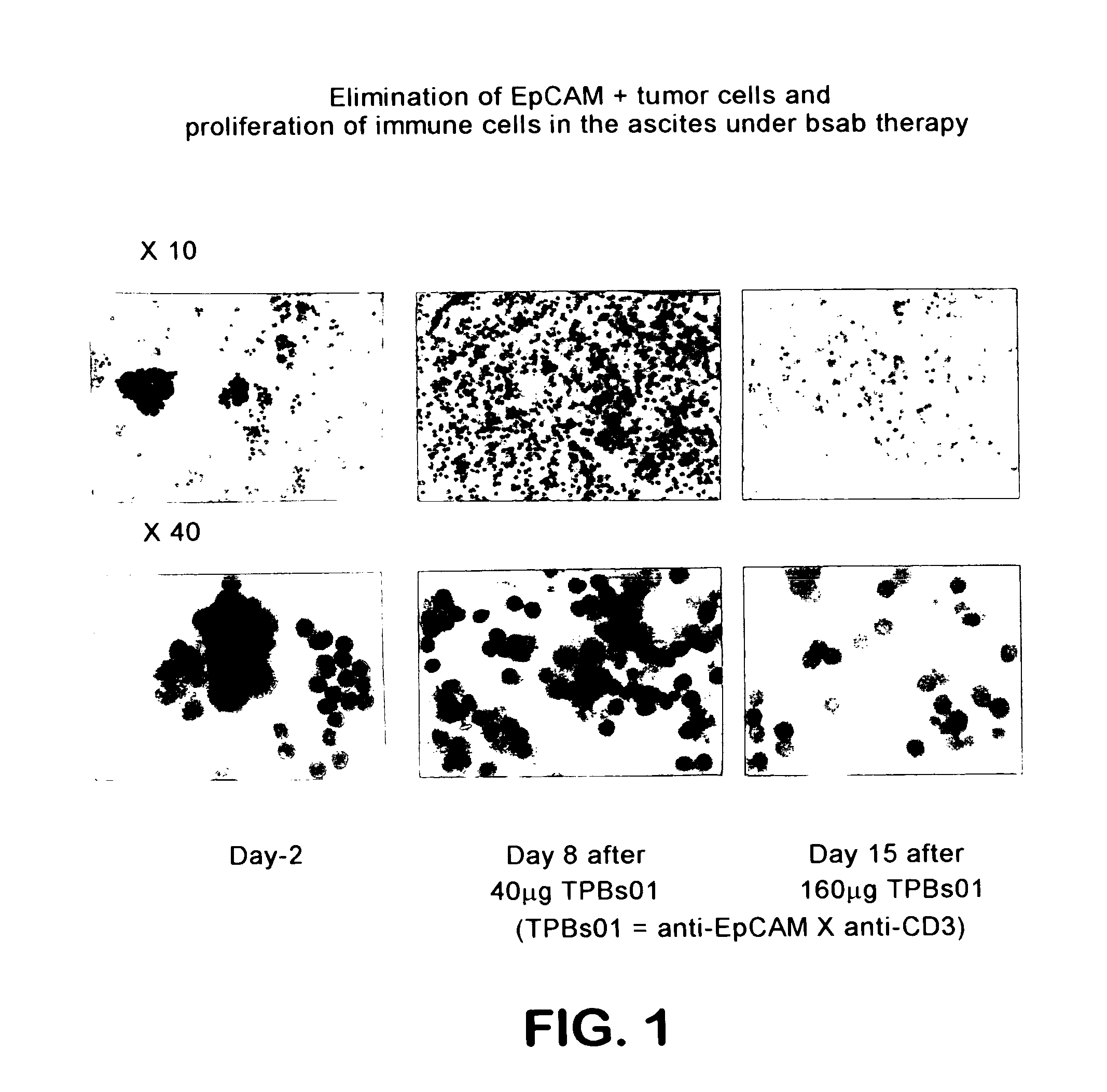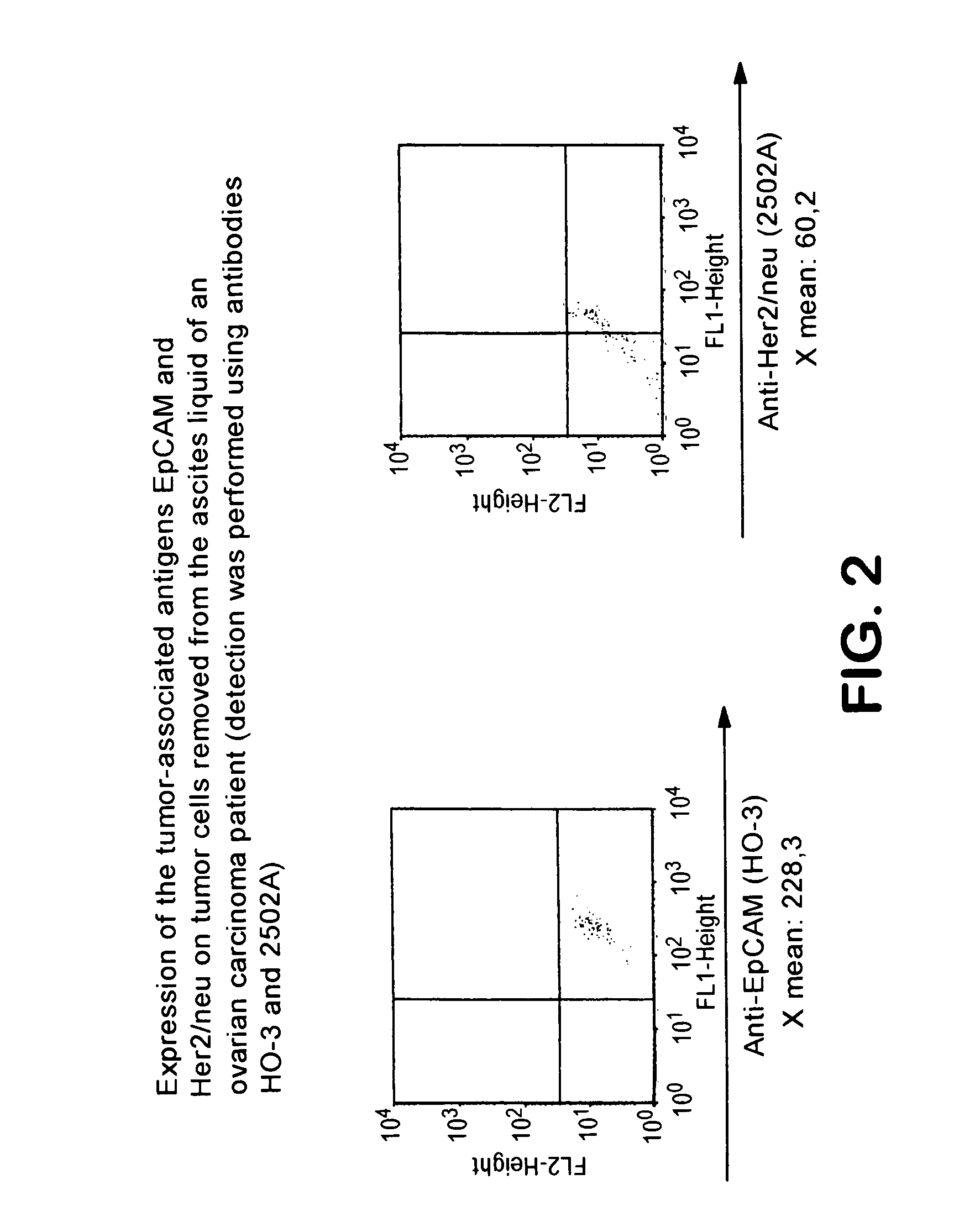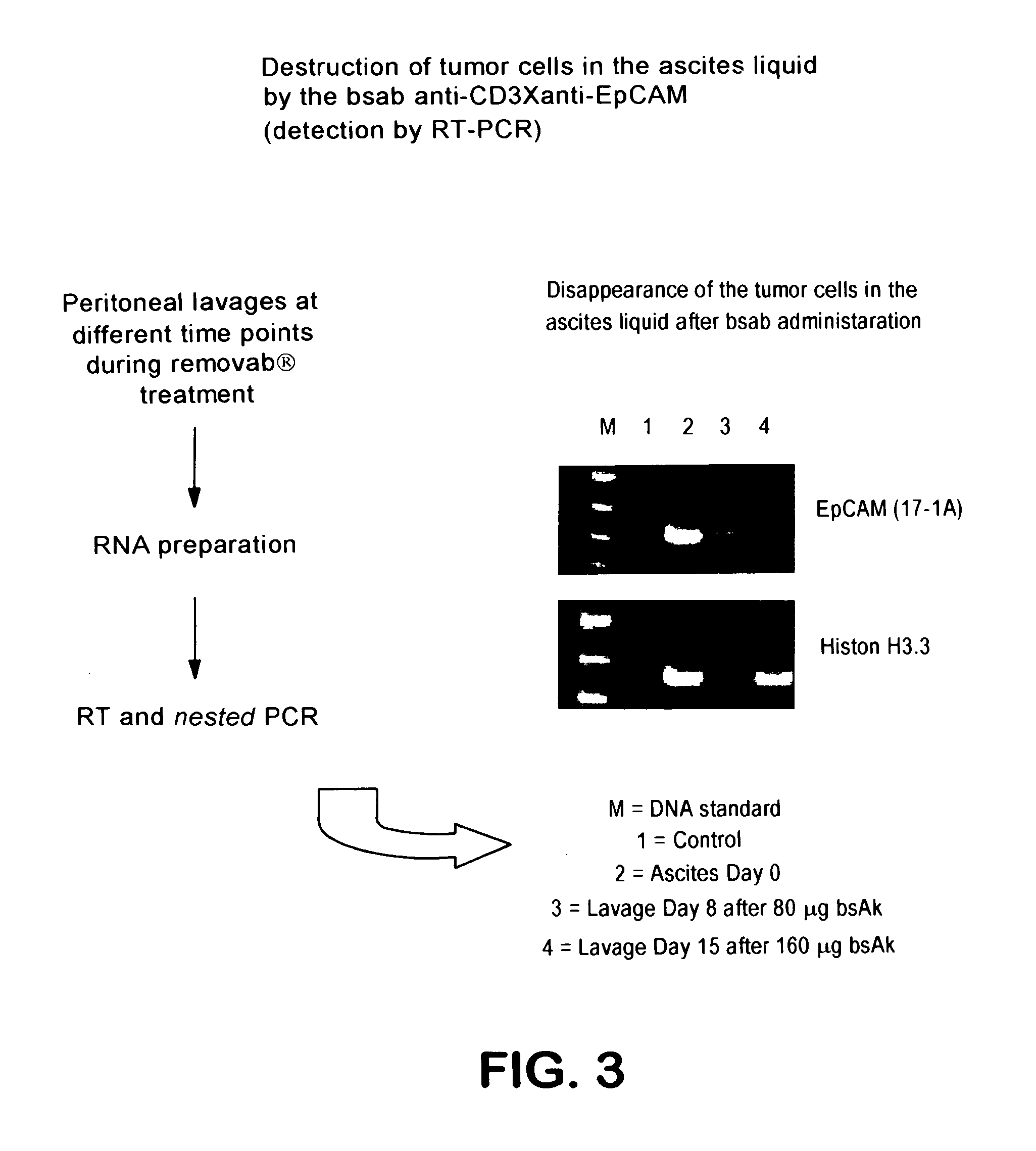Use of trifunctional bispecific and trispecific antibodies for the treatment of malignant ascites
a trifunctional bispecific and anti-malignant technology, applied in the direction of antibody medical ingredients, drug compositions, peptides, etc., can solve the problems that chemotherapy, although successful in patients, can only be achieved in short-term relief, and achieve the effect of alleviating symptoms for patients
- Summary
- Abstract
- Description
- Claims
- Application Information
AI Technical Summary
Benefits of technology
Problems solved by technology
Method used
Image
Examples
example 1
[0112]A patient with ovarian carcinoma first underwent a peritoneum puncture, then ascites liquid (700 ml) was removed and the cells contained therein were analyzed. As shown in FIG. 1 the tumor cells could be unambiguously identified already by visual inspection due to their morphology. In addition, anti-EpCAM peroxidase staining was performed.
[0113]Counting of the cells in the ascites prior to treatment gave a ratio of about 50:50 of tumor cells to immune cells.
[0114]The flow cytometric analysis revealed a strong positivity of the tumor cells for the EpCAM (epithelial cell adhesion molecule, Balzar et al., Mol. Cell. Biol., 18:4833, 1998) surface antigen as well as a weaker expression of the tumor-associated surface antigen Her2 / neu (FIG. 2).
[0115]To exclude the possibility of a reaction to foreign protein, first 10 μg of TPBS03 REXOMAB bsab (anti-Her2 / neu X anti-CD3; isotype combination mouse IgG2a X rat IgG2b) were infused intraperitoneally by means of a perfusor syringe over 8 ...
example 2
[0122]In another patient suffering from mammary carcinoma and ascites formation also a peritoneal puncture was performed, ascites liquid (3 liters) was collected and the cells contained therein were analyzed by flow cytometry. For this purpose, detection antibodies against the tumor-associated antigen EpCAM and CD14 were used to be able to distinguish unspecific binding to Fc receptor-positive cells (of the detection antibodies) from a binding to tumor cells. As shown in FIG. 4 at the point of day 0 prior to therapy more than 70% of the cells which were detectable in the ascites liquid were EpCAM-positive tumor cells which, however, under therapy were reduced to 0.7%.
[0123]On day 0 after removal of the ascites liquid the patient received 10 μg of the anti-EpCAM×anti-CD3 REMOVAB® antibody (isotype combination: mouse IgG2a×rat IgG2b) as well as on the following days 2 and 5 40 μg and 100 μg, respectively, of REMOVAB® intraperitoneally over a period of about 6 hours. On day 8 a combina...
PUM
| Property | Measurement | Unit |
|---|---|---|
| Time | aaaaa | aaaaa |
| Mass | aaaaa | aaaaa |
| Mass | aaaaa | aaaaa |
Abstract
Description
Claims
Application Information
 Login to View More
Login to View More - R&D
- Intellectual Property
- Life Sciences
- Materials
- Tech Scout
- Unparalleled Data Quality
- Higher Quality Content
- 60% Fewer Hallucinations
Browse by: Latest US Patents, China's latest patents, Technical Efficacy Thesaurus, Application Domain, Technology Topic, Popular Technical Reports.
© 2025 PatSnap. All rights reserved.Legal|Privacy policy|Modern Slavery Act Transparency Statement|Sitemap|About US| Contact US: help@patsnap.com



